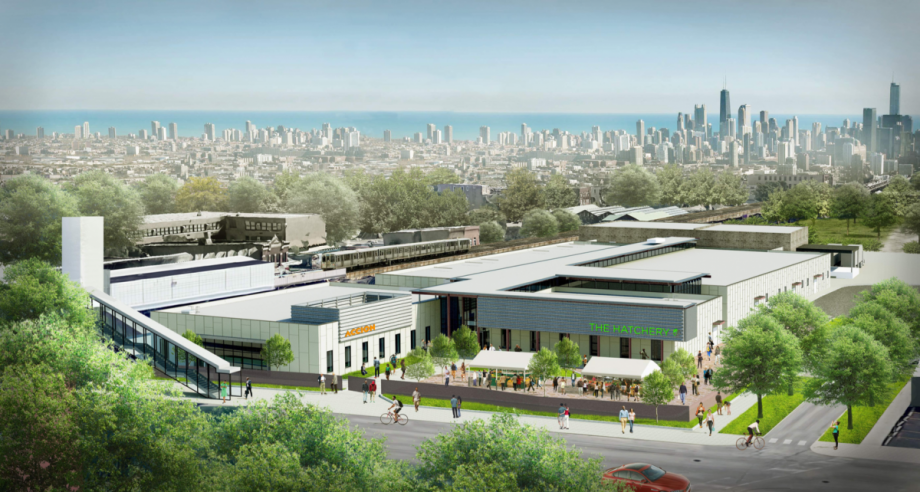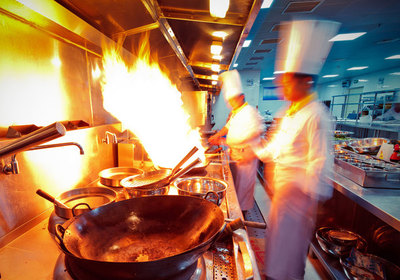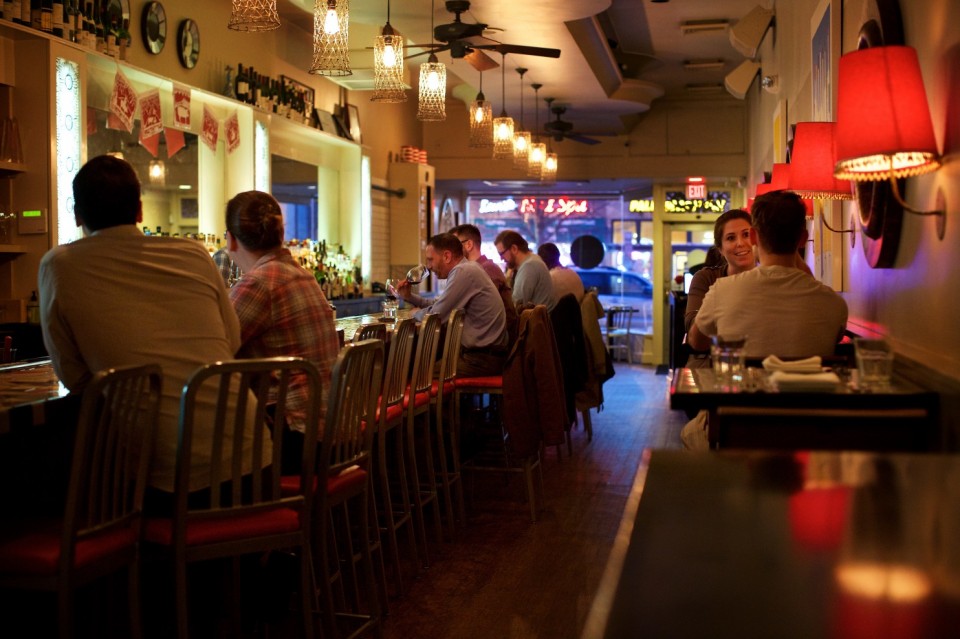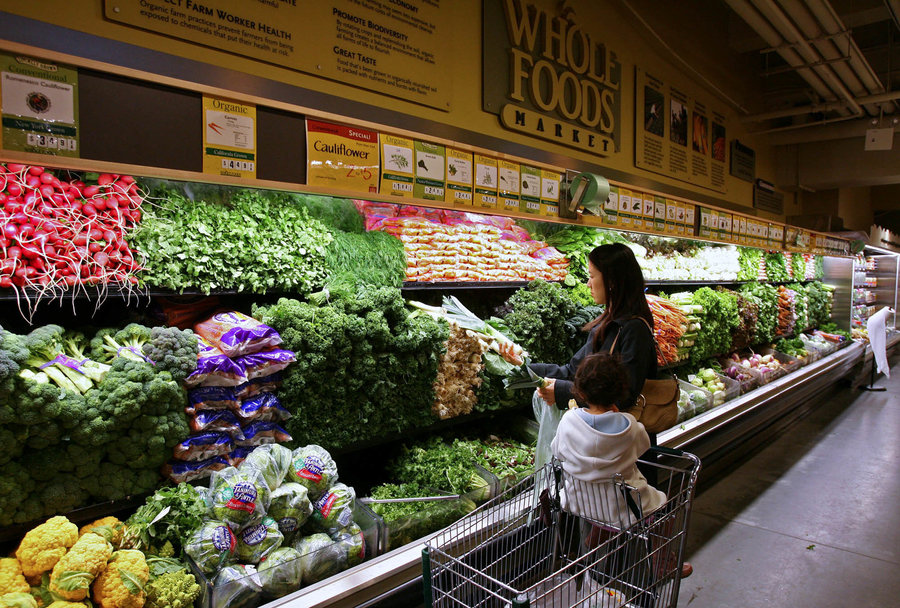
Jul 22, 2017
Oscar Perry Abello | Next City | July 19, 2017
Angela Taylor has been helping her neighbors grow food for years on the west side of Chicago. Soon, she’ll be helping some of them grow food businesses.
Taylor learned how to grow stuff at a young age. “Me being the youngest girl, I didn’t get to do the laundry and other chores inside,” she remembers. “I had to go outside and help daddy with the gardening.”
She and her husband moved into their current home, in the East Garfield Park neighborhood, in 2004. There was an abandoned community garden next door, covering two city lots, with raised beds.
“Right in front of where the garden had been [was] a notorious zone for the drug traffic,” Taylor recalls. “They sat in front of the garden on milk crates selling drugs all day and all night.”
She and her sisters cleaned up the space and put it back into use. It’s become the hub of the Garfield Park Community Council’s Community Garden Network, with 32 resident-led gardens scattered throughout East and West Garfield Park. Each garden provides some fresh fruits and vegetables for the gardeners, their families and neighbors, and the rest gets sold at the council’s bimonthly Neighborhood Market, which accepts food stamps as payment. “I’m sure you know we’re living in a food desert, and there is a lack of fresh produce,” says Taylor, who retired in 2012 from the Illinois Department of Human Services.
Taylor’s garden now has a rainwater catchment and irrigation system, and a community greenhouse with solar-powered heating and lighting. Every growing season, the garden network takes seedlings from the greenhouse to get started, and there’s enough left over to share with gardeners from other neighborhoods. There’s no more drug trafficking out front.
“When I first moved in, the seniors on my block wouldn’t even come out and sit on their porch because of all the drug trafficking,” Taylor adds. “But go there now and they’re sitting on their porch, some of them are taking naps, because now they feel safer in that type of environment. There’s not too much more to be said about that.”
Taylor hopes that The Hatchery, a brand-new, 67,000-square-foot food business incubator coming to the neighborhood, may have a similar effect on a much larger scale.
CONTINUE READING

Jul 14, 2017
CIT | 5/16/16
So you need financing for your restaurants? Just like packing for a trip, you need some standard items – things to keep in mind before you pick up that phone.
There are a host of macro and microeconomic (or top down vs bottom up) reasons lenders like extending credit in the restaurant franchise space. One reason is industry growth. According to the USDA, the percentage of total food expenditures outside the home has grown from 26.3% in 1960 to 49.6% today, even though the per capita percentage of disposable income allocated to food has declined in relative terms. In fact, Americans spent more money at restaurants than at grocery stores last year for the first time since the Census Bureau started tracking that information in 1992. When times get tough, diners simply respond by trading down instead of staying home. And when Americans start saving elsewhere, like with currently low gas prices, restaurants are among the biggest beneficiaries.
While chain restaurant investments provide for attractive opportunities both to lenders (i.e., debt side) and owner/operators (i.e., equity side), they are not without risk. In the absence of hard collateral to backstop financing, lenders have to accurately assess Enterprise Values and whether a franchise borrower group will create enough free cash flow (defined as EBITDA less G&A allocation and capex captured in the P&L) to cover their annual debt servicing requirements for an acquisition, remodeling, new location, or other funding need. Multiple factors weigh into the lender’s credit decision, such as:
1. Sector Trends
Which of the main restaurant categories – full service, quick service, fast casual, and snack – are in growth mode and which are in decline? Is the Franchisor responding to, driving, or missing market changes and demands? There are always winners and losers. Although sector shifts don’t happen overnight, most lenders take an extended view regarding portfolio performance, which extends years or even decades and must be cognizant of broad trends. Other considerations such as labor laws, supply-side input costs, demographics, household income trends, and interest rates will factor into a lender’s overall assessment of the sector.
2. The Brand
How is the system performing based on key metrics such as Same Store Sales, average unit volumes, COGS & Labor expenses and operating margins, and expected unit-level EBITDA? Is the concept performing above or below industry averages? Is the P&L insulated or susceptible to material input or COGS changes? How does the franchisee’s performance over the past three years stack up against these benchmarks?
CONTINUE READING

Jul 7, 2017

Jul 5, 2017
Maura Judkis | Washington Post | July 3rd, 2017
Ripple was the kind of warm, welcoming place that bred regulars like rabbits. It was both upscale and casual, and not overpriced. It won awards and was fondly reviewed. It was filled with people until, gradually, it wasn’t.
“Our sales were down, and they’ve been down over the last couple of years. I don’t know if that means fewer people are going out, or they’re going to different places,” said owner Roger Marmet.
He made the decision not to renew his lease, and the seven-year-old Cleveland Park restaurant served its last meal on June 24. Disappointed fans wondered: Was the bubble to blame?
If you’ve read anything about restaurants in the past six months, you would be certain that they were all doomed. “There’s a massive restaurant industry bubble, and it’s about to burst,” Thrillist proclaimed in December. For independent restaurants, it has already popped, according to an article in Restaurant Hospitality. The fast-casual bubble might be bursting, too, says Nation’s Restaurant News. Locally, Washingtonian cited several restaurateurs who were certain we were in a bubble. Every restaurant closing adds fuel to the fire.
“There is just an insane amount of restaurants opening, and I can’t imagine there’s enough to go around for everybody,” said John Fielding, owner of Soapstone Market and the former Chao Ku, which closed in February.
There are so many places to eat now, all filled with reclaimed barnwood and Tolix stools and poke and — for now, at least — people. Maybe it will last. Maybe they will struggle. But does that make what’s happening a bubble?
CONTINUE READING

Jun 28, 2017
Ashok Selvam | Eater | June 27th, 2017
Will an oyster bar succeed in Humboldt Park where Bar Marta struggled? The owners of Heritage Restaurant & Caviar Bar hope so, as they’ve taken over Bar Marta’s former space at 2700 N. Chicago Ave. and hope to open in early August, according to a rep. They’re billing it as Chicago’s first and only caviar bar.
Chef Guy Meikle (Nana Organic in Bridgeport) and team will serve breakfast, lunch, and dinner. And in a great comeback story, beverage director Jan Henrichsen (Fat Rice) will create the cocktails. Henrichsen left Fat Rice after a cancer diagnosis. She endured surgeries and radiation therapy which put her “out of commission” for a year. She’s since recovered, and took some low-level consulting gigs.
“I’m clean and clear,” Henrichsen said. “I’m so grateful to the hospitality industry and all the cheffy and server friends that helped out. It really made me feel like it’s a real community.”
Henrichsen has known Meikle since the two worked at Bin 36 Wine Bar in River North and Bin Wine Cafe in Wicker Park and they’ve slowly developed their idea for Heritage. It will be a restaurant that celebrates Eastern European food, a cuisine “that sometimes gets stepped on,” Henrichsen said. While caviar may sound expensive, Henrichsen points to Ukrainian Village grocers that stock the stuff: “It’s not necessarily all fancy,” she said. Heritage intends to serve caviar from a variety of price points.
CONTINUE READING

Jun 27, 2017
Jeff Daniels | CNBC | June 23rd, 2017
Amazon may want to dive into food service distribution, potentially shaking up an industry now dominated by three large players, according to a report.
“The risk has increased that AMZN becomes a disruptor to food service distribution models,” said JPMorgan analyst John Ivankoe in a research note published Friday. It said Amazon could do it through building its own operation or through an acquisition of an existing player in the industry.
The report is sparking a sell-off in food service distribution stocks as some investors worry Amazon’s entry would squeeze profit margins in an industry already known for stiff competition and tight margins. And it comes just a week after Amazon announced plans to pay $13.7 billion for Whole Foods, the major organic and natural foods grocery chain.
In trading, Sysco stock ended down 5.4 percent, US Foods fell 3.4 percent and Performance Food Group dropped 1.7 percent. Amazon shares rose fractionally.
On Friday, JPMorgan also removed Sysco stock from the firm’s focus list, citing added risk within the space. JPMorgan pointed out that since the Amazon-Whole Foods deal was announced, Sysco and US Foods shares have been under pressure.
Sysco and US Foods declined to comment. CNBC also reached out to Performance Food Group and Amazon but didn’t hear back at deadline.
CONTINUE READING






